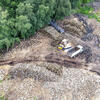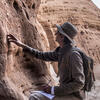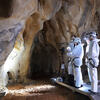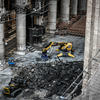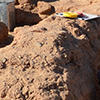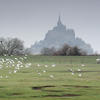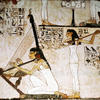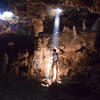You are here
A new window into the Bronze Age discovered in central France
11.24.2021
A team of archaeologists from the TRACES laboratory, in southwestern France, carrying out excavations in the Allier department (central France) has made a discovery dating back to more than 2,800 years ago. They have uncovered several exceptional deposits of bronze objects, buried in a large fortified settlement dating from the end of the Bronze Age (around 800 BC).

1
Slideshow mode
One of the metal deposits found at the excavation site. This ceramic vessel is filled with several dozen bronze objects such as bracelets, axe blades, pendants and decorated belt plates. They are very well preserved and are covered with the blue-green patina typical of bronze.
Cyril Frésillon / Traces / CNRS Photothèque

2
Slideshow mode
The fortified settlement unearthed by the scientists covers an area of about thirty hectares, and was protected by two parallel ramparts about 350 metres long. Each of them, like the outer one shown here, is bordered by a sloping glacis cut into the rock, a longitudinal section of which can be seen in this photograph.
Cyril Frésillon / Traces / CNRS Photothèque

3
Slideshow mode
At each important stage of the excavation (here, the top of the inner rampart) the archaeologists take photographs to keep track of the progress of their work. Pictured here, the crest of the glacis cut into the rock.
Cyril Frésillon / Traces / CNRS Photothèque

4
Slideshow mode
Undeterred by the rain, the team continues to work. This scientist is using a theodolite to make a three-dimensional survey of the archaeological objects on the inner rampart.
Cyril Frésillon / Traces / CNRS Photothèque

5
Slideshow mode
In sunny weather too, the archaeologists always find a way to take photographs under the best conditions. This section of the rampart still holds plenty of secrets.
Cyril Frésillon / Traces / CNRS Photothèque
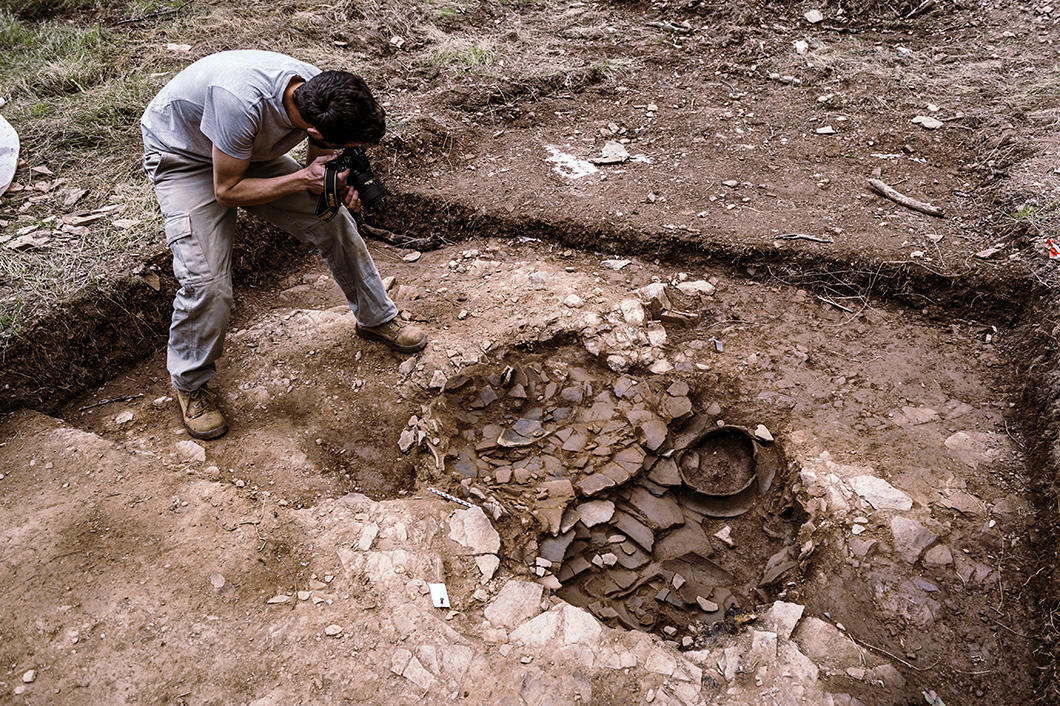
6
Slideshow mode
Several deposits have been discovered at the centre of the fortified settlement. This one is made up of several hundreds of vessel fragments. Here, an archaeologist is making a photogrammetric survey of it.
Cyril Frésillon / Traces / CNRS Photothèque

7
Slideshow mode
Using a metal detector, this archaeologist has discovered a new deposit under the inner rampart.
Cyril Frésillon / Traces / CNRS Photothèque

8
Slideshow mode
The new deposit comprises a ceramic vessel and lid containing bronze objects.
Pierre-Yves Milcent / Traces

9
Slideshow mode
Back in the lab, these archaeologists are carefully examining each newly-found vessel and removing the sediment. They are trying to figure out how the various bronze objects were initially arranged inside them.
Cyril Frésillon / Traces / CNRS Photothèque

10
Slideshow mode
This scientist is taking a series of photographs of the vessel containing the artefacts. This photographic technique makes it possible to obtain a 3D model by photogrammetry and thus understand the way in which the various objects are arranged relative to one another.
Cyril Frésillon / Traces / CNRS Photothèque

11
Slideshow mode
Studying these deposits could shed light on an intriguing phenomenon typical of the Bronze Age in Europe: why was wealth deliberately and systematically buried in places that were neither burial grounds nor places of worship?
Cyril Frésillon / Traces / CNRS Photothèque
Explore more
Society
Article
12/02/2025
Article
11/09/2025
Article
10/20/2025
Article
10/15/2025
Article
10/03/2025
Archaeology
Article
09/29/2025
Article
04/21/2025
Article
04/16/2025
Slideshow
11/08/2024
Article
10/31/2024
Archeology
Article
10/17/2019
Slideshow
04/26/2018
Article
03/08/2018
Article
01/17/2018
Article
02/21/2017






